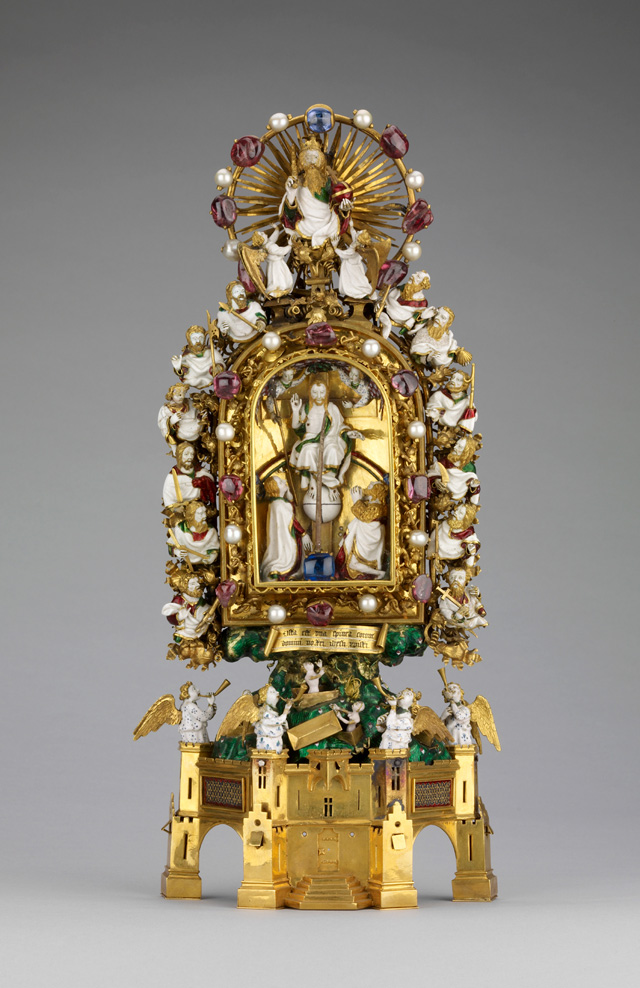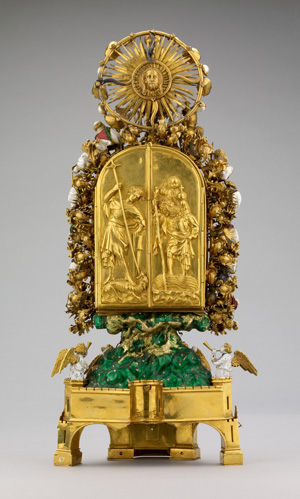The Holy Thorn Reliquary
The British Museum, London, The Waddesdon Bequest
Copyright © The Trustees of the British Museum

 Select the image to zoom
Select the image to zoom
This reliquary, with its magnificent vision of the Last Judgment, was made to contain a thorn that the Latin inscription asserts, came originally from the Crown of Thorns placed on Christ's head before the Crucifixion. The Crown of Thorns was brought to Paris from Constantinople by Louis IX of France, who constructed the Sainte-Chapelle in Paris to house it. The Crown was closely associated with the French royal family, and individual thorns were used to make jewels of various kinds.
This reliquary of the Holy Thorn was made for Jean, duke of Berry (1340–1416); two panels on the base are enameled with his arms as used before 1397. He was the third son of Charles V of France and exercised almost sovereign powers in the Berry, with Bourges as its capital. There, next to his palace, he constructed a mortuary chapel modeled on the Sainte-Chapelle in Paris, which was consecrated in 1405. The scale of the reliquary and the sumptuous nature of the gold work, enamel, and jewels emphasize the very personal nature of the reliquary. The belief that the Crown of Thorns was merely on deposit to the realm of France until Christ would claim it back on the day of Judgment may have influenced the choice of subject matter that enshrines the thorn.
It is thought that Jean may have given away this reliquary before 1401, perhaps as one of his étrennes, or New Year's gifts, used to affirm patronage and build ties of allegiance at the Valois court. The reliquary is first recorded in the 1544 inventory of the treasury chapel of the Holy Roman Emperors in Vienna. It remained there until 1860 when it was sent for restoration to Salomon Weininger, who kept the original and returned a replica. The original reliquary was then acquired by Baron Anselm von Rothschild of Vienna before 1873 and passed to his son, Baron Ferdinand de Rothschild, by inheritance. The story of the forgery and substitution was only uncovered in 1925 through the work of Joseph Destrée.






